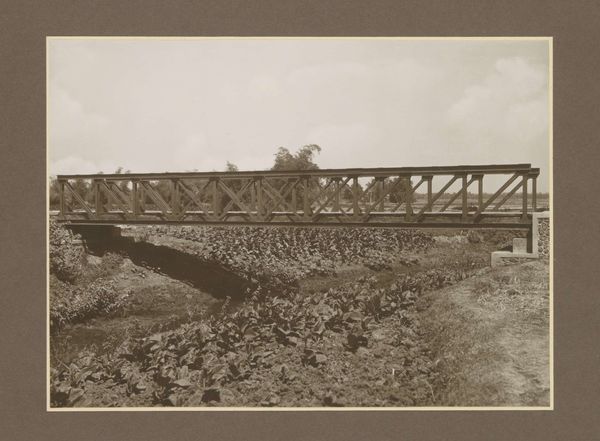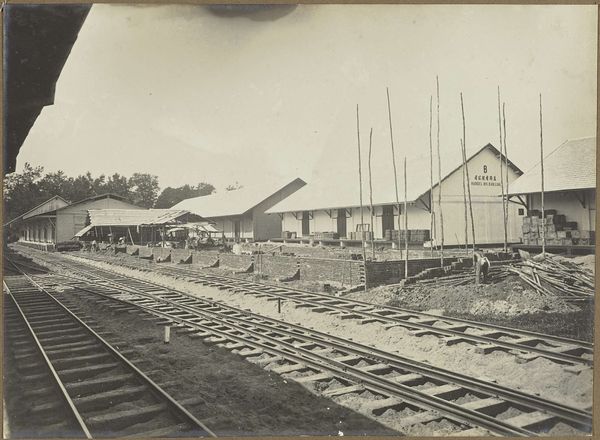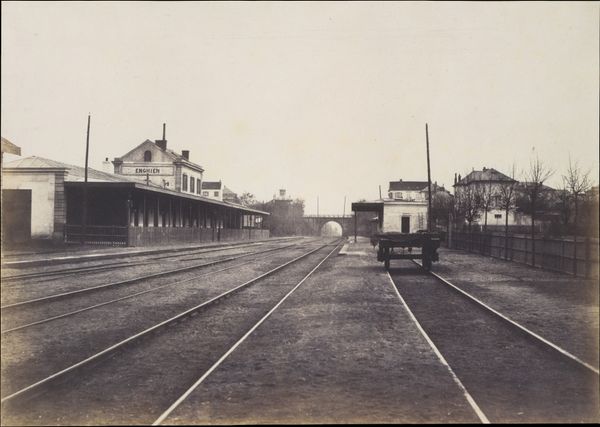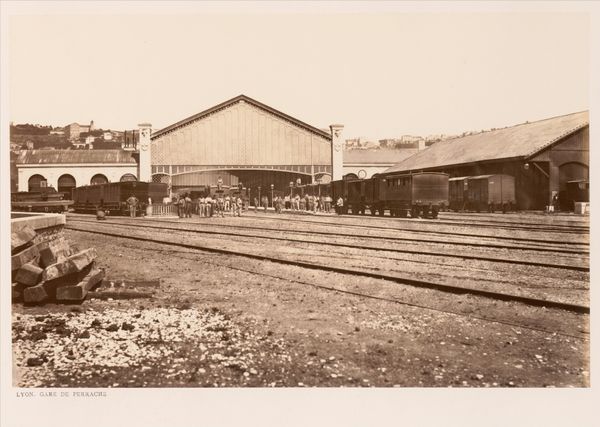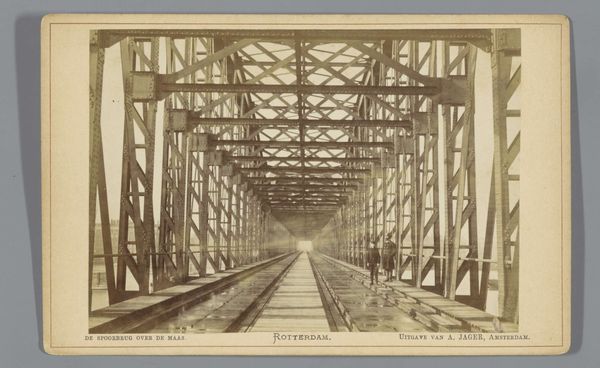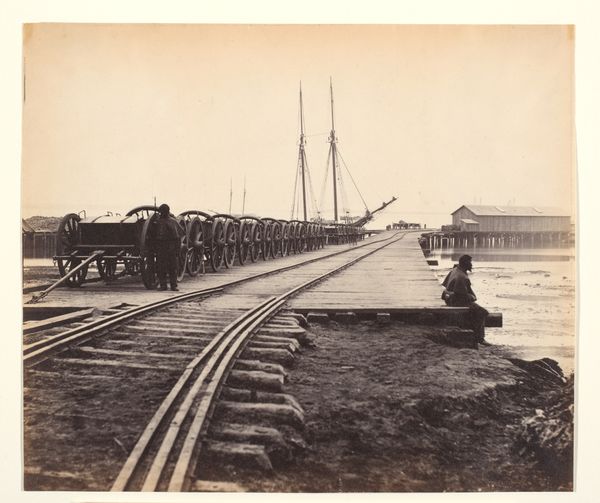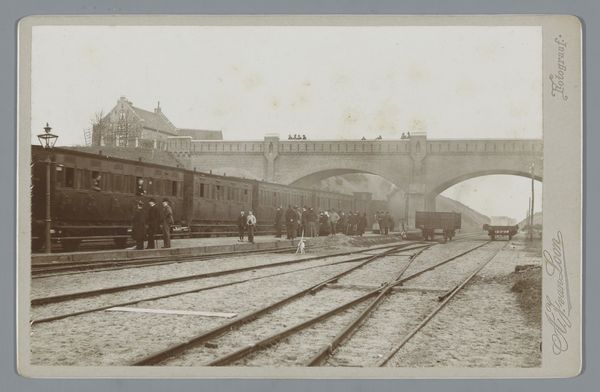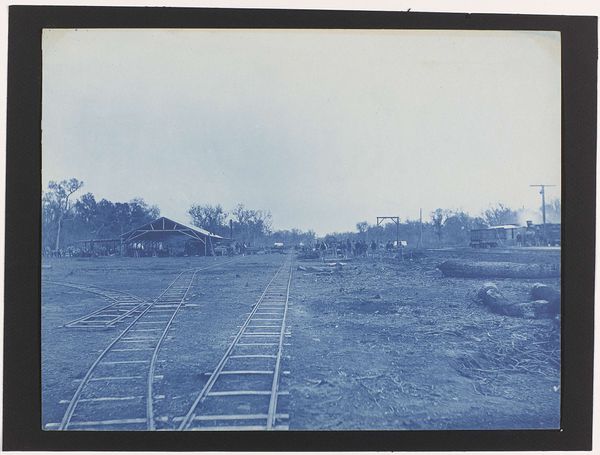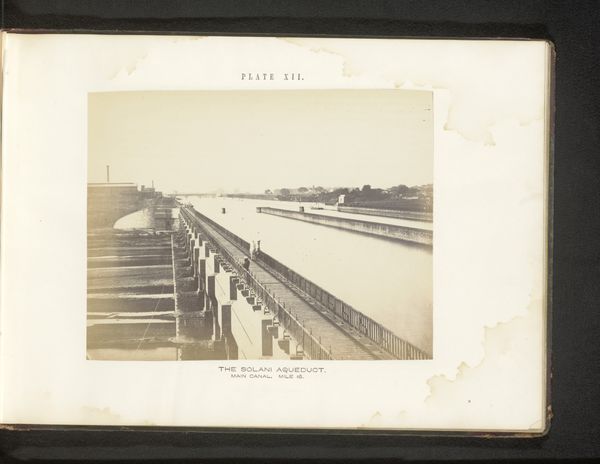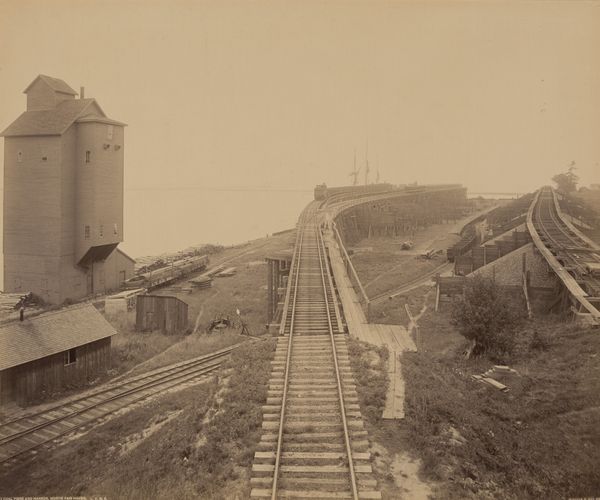
photography
#
archive photography
#
photography
#
historical photography
#
geometric
#
cityscape
#
realism
Dimensions: height 242 mm, width 299 mm
Copyright: Rijks Museum: Open Domain
Editor: This is an anonymous photograph from between 1926 and 1928 entitled "Goedang/Atelier". It depicts a large, white warehouse or workshop-like building alongside a series of train tracks. There is such a stark feeling in the photograph – austere even. How would you interpret this image, particularly given its historical context? Curator: The photograph certainly evokes a feeling of industrial pragmatism, doesn't it? Looking at this through a historical lens, it’s vital to consider where this was taken and when. Given the title – "Goedang/Atelier" – and the Rijksmuseum's acquisition of it, this is likely Indonesia under Dutch colonial rule. The "goedang," or warehouse, signifies colonial economic exploitation and resource extraction. Does this building resemble other colonial structures you may have encountered? Editor: That's fascinating. I hadn’t considered the colonial aspect so explicitly. It does share a certain stark functionalism with other colonial-era infrastructure, focusing on practicality over aesthetics. So, this photograph isn't just a record of a building; it’s a document reflecting power structures? Curator: Precisely. Photography during this period in colonized nations served multiple purposes, from documentation of infrastructure projects to assertion of dominance. The presence of train tracks indicates the building's link to wider colonial networks. And the date, the late 1920s, places it squarely within a period of rising Indonesian nationalism and resistance to colonial rule. So, it’s really an intersection of a specific time, a place and all the things that define this relationship. Do you think the photographer might have been conscious of the underlying tension? Editor: Possibly, though it's hard to say for sure given its anonymity. What strikes me now is how this seemingly simple image contains layers of socio-political commentary. It shows how even seemingly neutral depictions are steeped in historical context. Curator: Exactly! That tension, that inherent imbalance, gives even mundane photographs enormous evocative power. We both learned that context, in our fields, makes the art.
Comments
No comments
Be the first to comment and join the conversation on the ultimate creative platform.
